#French exhibition
Explore tagged Tumblr posts
Text
Merci Brigitte Leloire Kerackian pour cette interview diffusée sur Radio Arménie de Lyon, ma toute première interview 😊 (sans grande grande préparation 😊😊 dans une brasserie parisienne)
L’occasion de parler de l’art de la miniature et de l’exposition collective « La Miniature Persane au Jardin du Luxembourg » avec l’association « Abbas Moayeri Héritage Art & Culture », au Pavillon Davioud dans le Jardin du Luxembourg
24 août - 4 septembre 2023
Entrée porte Vavin: 55bis, rue d’Assas
75006 Paris
#miniatures persanes#Abbas moayeri#exposition parisienne#French exhibition#parisian exhibition#indopersian miniature painting#laureen topalian#radio arménie#radio arménie Lyon#jardin du luxembourg#pavillon Davioud
2 notes
·
View notes
Text

Mugler, printemps été 1997
Exposition Fashion Big Bang au Palais Galiera, musée de la mode de la ville de Paris
#fashion#dress#robe#mode#haute couture#beautiful#love#couture#beauty#moda#museum#paris#parisian#paris couture#paris fashion#parisian style#paris fashion week#fashion show#mugler#thierry mugler#black dress#black#art#culture#fashion exhibition#art exhibition#french#frenchy#france#followme
1K notes
·
View notes
Text

Vincent van Gogh - The Stevedores in Arles.
#Vincent van Gogh#van gogh#post impressionism#impressionism#french impressionism#arte#history#art#painting#artwork#oil painting#paintings#art history#19th century art#kunst#art exhibition#dibujo#pintura#escultura#culture#education
181 notes
·
View notes
Text
#Baturday :



Edmond Lachenal (France, 1855-1930)
Vases in the Form of Lanterns, c.1885
Glazed earthenware, Hand painted earthenware
Now on display at Philadelphia Museum of Art “Firing the Imagination: Japanese Intluence on French Ceramics, 1860-1910”
“In 1870, at age 15, Edmond Lachenal apprenticed himself to the renowned ceramist Théodore Deck. At the Deck studio in Paris, Lachenal learned both production techniques and the non-Western styles and ornamental traditions which Deck was beginning to incorporate in his work. Lachenal brought these approaches with him when he established his own workshop in 1883. There he produced small and large Japanese-inspired plaques, vases, and sculptural objects.
Shaped like Japanese paper lantern[s], th[ese] vase[s] [are] decorated with two sculptural brown bats. Lachenal may have been influenced by the work of the Japanese potter Miyagawa Kōzan (1842–1916), whose prize-winning ceramics were displayed at the Paris Universal Expositions of 1878 and 1889. Kōzan was celebrated for his decorative technique taka-ukibori (sculptural relief), in which he decorated the surfaces of his wares with realistic three-dimensional high reliefs and sculptures, such as a crab climbing on the edge of a bowl.”
#animals in art#european art#19th century art#Japonisme#French art#ceramics#vase#bat#bats#pair#museum visit#exhibition#Philadelphia Museum of Art#Edmond Lachenal#decorative arts#earthenware#Baturday
92 notes
·
View notes
Text


me and Robespierre went to the met cloisters btw. if you even care. ^__^
#frev#robespierre#bombastic side eye whenever the exhibit captions mentioned stuff being taken/destroyed during the french revolution ......
68 notes
·
View notes
Text

Alexandre III bridge at the 1900 World Exhibition in Paris
French vintage postcard
#postal#historic#french#ansichtskarte#exhibition#paris#sepia#vintage#tarjeta#the 1900 world exhibition#bridge#briefkaart#alexandre iii bridge#photo#alexandre#1900#world#postkaart#ephemera#postcard#postkarte#photography#carte postale
28 notes
·
View notes
Text
i love men named frenchie
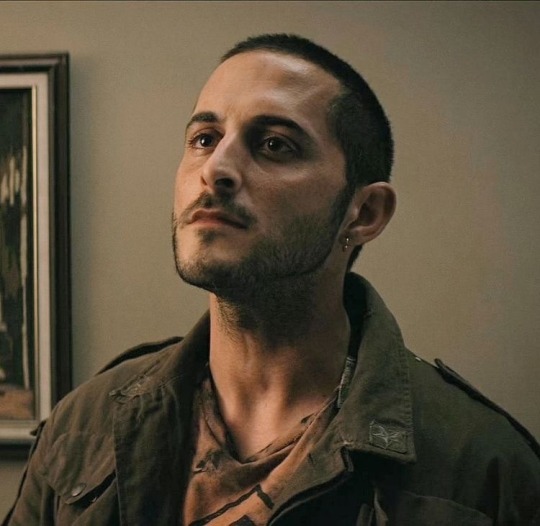
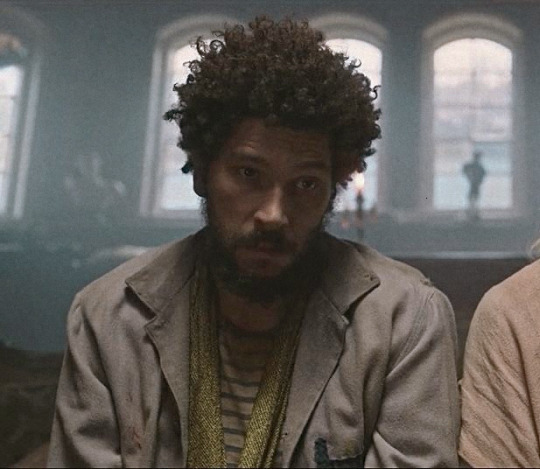
#my type#exhibit a frenchie is a queer little crop top wearing short king who cooks and does drugs and is actually french#exhibit b frenchie is a queer not so little precious musician who sews and pulls off biggest emo gender envy and is not french#in retrospect this post aligns well with the results of my asking you guys what ofmd character you think i am lol#frenchie the boys#frenchie ofmd#tomer capone#joel fry#the boys#ofmd#our flag means death
157 notes
·
View notes
Text
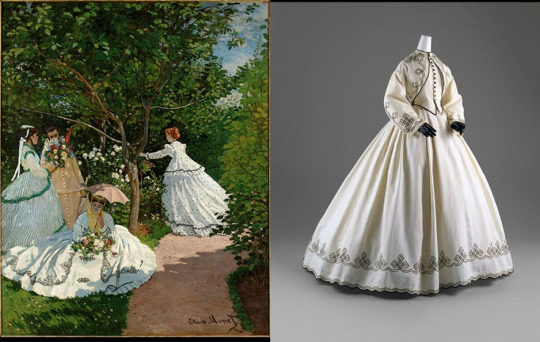
The painting: Claude Monet (French, 1848-1928) • Women in the Garden • 1866 • Musée d’Orsay, Paris
The Dress: Day Dress • American • 1862–64 • White cotton piqué with black soutache • The Metropolitan Museum of Art, New York
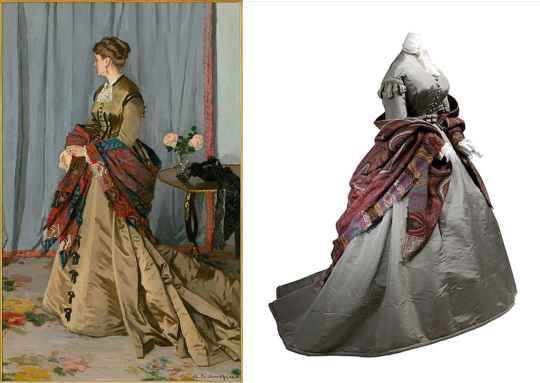
The Painting: Claude Monet (French, 1848-1928) • Portrait of Madame Gaudibert • 1868
The outfit: French ensemble • 1865/67 • Gray silk faille with cashmere shawl from India • Usually worn over the shoulders or in the crook of the arms • Metropolitan Museum of Art
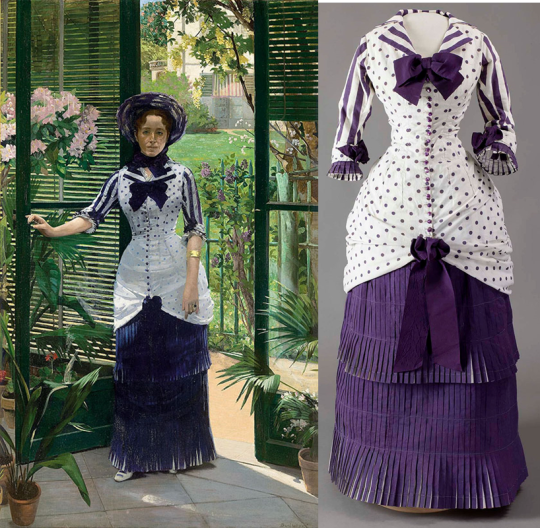
The painting: Paul-Albert Bartholomé (French, 1848-1928) • In the Greenhouse • 1881 (the sitter is Bartholomé's wife)
The dress: Sewn from white cotton printed with purple stripes and dots, this summer gown was made by an unknown French seamstress around 1880.
These three paintings and their companion outfits were part of a large exhibition, Impressionism, Fashion, and Modernity, at The Metropolitan Museum of Art, New York, February, 2013.
#art#painting#art history#impressionism#art exhibitions#fine art#paul-albert bartholomé#claude monet#dresses in paintings#fashion history#historical fashion#historical clothing#19th century women's fashion#the resplendent outfit#art blogs on tumblr#oil painting#the metropolitan museum of art#french artists#museum aesthetic
76 notes
·
View notes
Text


After 95(!) years and a solo exhibition at Alfred Flechtheim’s gallery in Düsseldorf Maurice de Vlaminck (1876-1958) finally receives a retrospective in Germany: with „Maurice de Vlaminck. Rebell der Moderne“ the Museum Barberini until January 12, 2025 presents a comprehensive overview of the painter’s oeuvre that comprises a total of 76 paintings.
The exhibition is accompanied by the present handsome catalogue published by Prestel that is warmly recommended to all those who can’t make it to Potsdam in time. Of course it contains all of the paintings included in the exhibition but also provides substantial information about de Vlaminck: in five essays experts and curators discuss the painter’s relationship with the Fauves as well as his Fauvist paintings, elucidate his reception of Vincent van Gogh’s art, his connection with Cézanne and Picasso and also shed light on Vlaminck’s use of pure colors straight from the tube.
What emerges from these essays is an artist as colorful as his paintings: a former bicycle racer, violinist, boxer and anarchist Vlaminck prided himself on never having attended an art academy and cultivated his image as a real „fauve“, a wild beast. The latter term dates back to the 1905 Salon d’Automne where Vlamincks paintings were exhibited alongside Henri Matisse’s, André Derain’s and Kees van Dongen’s: their powerful colors and focus on expression and emotion provoked the critic Louis Vauxcelles to call them „fauves“ and eventually made them examples also for the German expressionists. Vlaminck came to the use of pure color together with André Derain whom he met by chance in 1900 and with whom he explored the landscapes along the river Seine. Of course, and despite his own assertions, he was were well aware of the Impressionists/Neo-impressionists but transferred their motifs into the 20th century. Around 1908 Vlaminck gradually put behind Fauvism and began experimenting with cubist forms in a number of landscape paintings, portraits and seascapes, although in retrospect he dismissed Cubism. In parallel Cézanne became an important reference, especially in still lifes and landscapes. The latter also dominates Vlaminck’s late work, this time in the form of snowy forests and villages. To this day this late work has received only little attention, probably due to Vlaminck’s outspoken support of the Nazi art doctrines. The Potsdam exhibition and catalogue thus offer the rare chance to forge an opinion about these disputed works.
In view of the few German language publications on Vlaminck and the insightful essays as well as the countless illustrations the present catalogue is a highly recommended read and a great substitute for an exhibition visit!
23 notes
·
View notes
Text


Monet in York Art Gallery 🎨
#Monet#claude monet#water lilies#York#York art gallery#art#art gallery#impressionism#impressionist art#impressionist#french artist#French art#french impressionism#art history#history of art#artblr#gallery#giverny#Les nymphéas#art exhibition#paintings#painting#oil painting#art on tumblr
13 notes
·
View notes
Text

Christopher French: Constellations and Fables, Essay by David Pagel, Marsha Mateyka Gallery, Washington, D.C., 1992 [Art Book Viewer, Brooklyn, NY. Art: © Christopher French]










Exhibition: October 3 – November 7, 1992
↗ Christopher French Studio
#graphic design#art#mixed media#drawing#geometry#exhibition#catalogue#catalog#cover#back cover#christopher french#david pagel#marsha mateyka gallery#1990s
11 notes
·
View notes
Text
instagram
Je suis très heureuse de participer à l’exposition collective « La Miniature Persane au Jardin du Luxembourg », qui sera aussi l’inauguration de l’Association « Abbas Moayeri Héritage Art & Culture »
24 août - 4 septembre 2023
Tous les jours-Entrée libre
Pavillon Davioud, Jardin du Luxembourg
Entrée Porte Vavin: 55 bis, rue d’Assas
75006 Paris
#abbasmoayeri#abbasmoayeriheritageartetcylture#miniaturepersanecontemporaine#miniaturepersane#persianminiature#indopersianminiature#Instagram#laureen topalian#exposition parisienne#French exhibition
1 note
·
View note
Text

Thierry Mugler, printemps été 1997, collection des insectes
Exposition Fashion Big Bang au Palais Galiera, musée de la mode de la ville de Paris
#mugler#fashion#dress#robe#mode#haute couture#beautiful#beauty#love#couture#moda#thierry mugler#fashion week#museum#art#art exhibition#fashion exhibition#exhibition#paris#parisian#french#france#french fashion#beautfiul#models#black#black dress#robe noire#feather#bird
100 notes
·
View notes
Text

Paul Signac - Port-en-Bessin.
Explore our visual guides and documentaries about art & history.
#Paul Signac#art#history#painting#artwork#oil painting#paintings#art history#arte#kunst#french impressionism#impressionism#impressionen#impressionist art#sea#coast#seascape#beach#seaside#shore#boat#art exhibition#pintura
22 notes
·
View notes
Text
For #FrogFriday 🐸:

Figure Group of Frogs, c.1905
Marie Gautier (France, 1870-?)
Made by Émile Decoeur (France, 1876-1953)
Stoneware
Now on display at Philadelphia Museum of Art “Firing the Imagination: Japanese Intluence on French Ceramics, 1860-1910”
#animals in art#20th century art#frog#frogs#French art#Japonisme#Art Nouveau#stoneware#ceramics#sculpture#women artists#museum visit#exhibition#Philadelphia Museum of Art#Marie Gautier#European art#Émile Decoeur#1900s
39 notes
·
View notes
Text


22 notes
·
View notes